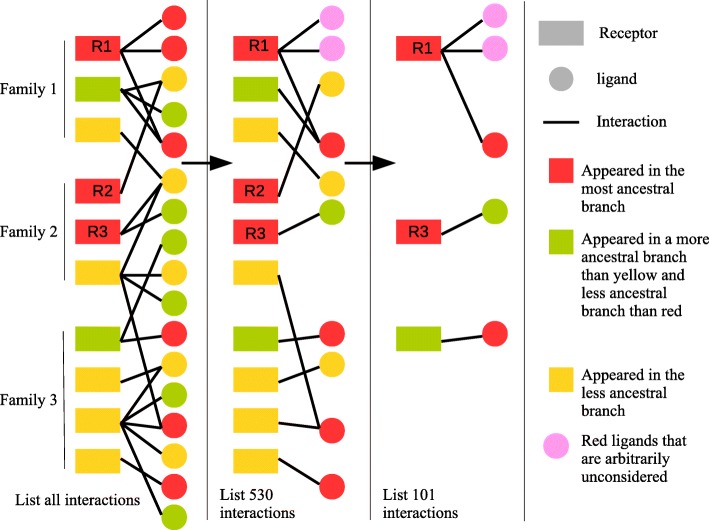Fig. 2.
Schematic representation of the three list of interactions depicted in the article. The “complete list” represents the initial list of 1479 interactions. The receptors are grouped by family. Each receptor establishes interactions with one or more ligands. Here as an example, we have represented 22 interactions among the 1479 in the real list. In red are represented the molecules, ligands as receptors, appeared in the most ancestral branch. In green are represented the molecules that appeared in a less ancestral branch than the red molecules, and in yellow the molecules that appeared in a branch less ancestral than green molecules. The “Non redundant interactions” represents the reduction of the global list of 1479 interactions to 553 non-redundant interactions, by removing all the ligands that are not the most ancestral ones. In case several ligands appeared at the same time (R1 receptor), we consider only one ligand, by arbitrarily choosing one of them. The nature of the ligand does not matter because it is only the branch of appearance (common to all) that concerns us. In this diagram, the list of 22 redundant interactions is reduced to 10 interactions (one per receptor). The “One interaction by family” represents the reduction of the list of 553 non-redundant interactions into a list of 113 interactions. To make this reduction, we takes in every receptor family the first receptor that appeared, with its first ligand. In the case of family 2 of the diagram, we note that two receptors appeared at the same time and in the most ancestral branch. In this case, we choose the receptor whose first ligand appeared. Here, it is R3 that is chosen rather than R2. In this list we go from 10 interactions to 3, as many interactions as there are families

